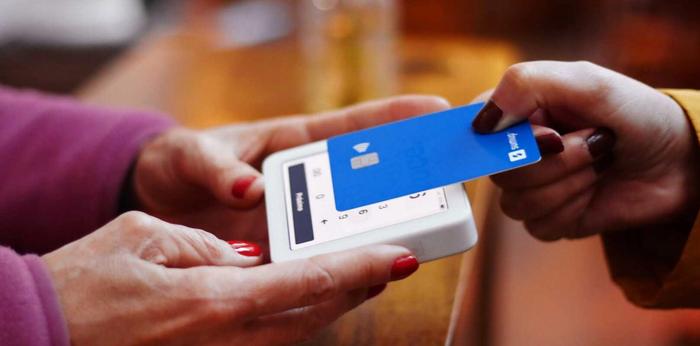Numbers don't lie. According to Salesforce, with clienteling, data collection rates see increases of as much as 300% and retention rates by as much as 200%.
Sound exciting?
It truly does, but it's also challenging to hop on this trend overnight. If you're still relying solely on traditional sales methods, it's time to read on and discover why clienteling is shaping the future of sales.
What is clienteling?
Clienteling is a personalized approach to sales that focuses on building long-term relationships with customers rather than just making quick sales.
It combines data analytics, personalized service, and customer engagement to create a unique and memorable shopping experience.
How does clienteling work?
Clienteling is a comprehensive strategy that involves several components. Here's how it works:
It involves personalized recommendations
Instead of throwing spaghetti at the wall to see what sticks, sales associates dig deep into customer data to handpick product suggestions.
Sales associates use customer data to offer personalized product recommendations.
Using past purchases and browsing history to tailor suggestions, businesses can deliver better offerings and experiences. This translates to higher sales.
It might involve real-time inventory access
Sales associates have real-time access to inventory levels so that they can provide accurate information to customers. Knowing what's in stock and what's not available can make or break a sale, especially for customers who are in a hurry.
It always comes with post-purchase follow-up
Clienteling includes post-purchase follow-ups to gauge customer satisfaction and offer additional products or services. This increases the chance of repeat business. A simple thank-you email with a discount code for a future purchase can go a long way in building loyalty.
It understands omnichannel experience
Clienteling is often integrated into an omnichannel strategy, providing a seamless shopping experience whether the customer is online or in-store. A unified shopping experience across all channels is what today's customers expect and appreciate. As a result, you might soon see an increase in sales.
How to build your clienteling strategy
Creating a fully functional clienteling strategy is about creating a comprehensive approach that aligns with your brand's ethos and customer expectations. Below are nine crucial steps that serve as a roadmap for digital businesses looking to excel in clienteling.
1. Prioritize customer experience
If you put customer satisfaction aside, you won't go far with your clienteling strategy. Use customer feedback and post-purchase surveys to gauge how well you're meeting customer expectations. Make it a point to act on this feedback by refining your services or products. Provide a more personalized service for increased customer satisfaction.

Continuously monitor customer satisfaction levels to ensure that your efforts are paying off. Don't hesitate to make adjustments based on customer input. You're almost certain to do so, anyway.
Use case: An online streaming service could use post-watch surveys to ask viewers about their experience with the streaming quality and content selection. Negative feedback could lead to technical improvements, while positive feedback could be highlighted in promotional materials. All feedback counts.
This could also be applicable in SaaS. A live chat solution can send relevant surveys to their website visitors:
2. Implement 360 customer data management
To offer personalized experiences, you need data.
A lot of it.
Collect data at every touchpoint, from online browsing behavior through in-app interactions to purchases in retail stores, and use this data to tailor your marketing and sales strategies. The more comprehensive your data collection, the more personalized and effective your clienteling efforts will be.
Always double check that you’re complying with data protection regulations when collecting and using customer data, though.
Checklist to follow:
- List all touchpoints where customer data can be collected, such as websites, apps, and in-store.
- Merge all collected data into one central database for easy access and analysis of the customer journey.
- Make sure your data collection methods follow legal regulations like GDPR or CCPA.
- Use simple analytics tools to find patterns and insights, but also customer’s preferences, in your customer data.
- Leverage the customer information to personalize your marketing and sales campaigns for better effectiveness.
Use case: A headless commerce platform could use machine learning algorithms to analyze browsing history, click patterns, and past purchases to recommend products that are most likely to interest individual customers.
3. Run sales associates’ training
Your sales associates are the face of your brand. Empowering sales associates with money or rewards is one thing – but serving them with training resources can make a key difference.
Invest in comprehensive training programs that equip them with the skills needed to excel in clienteling, from product knowledge to customer interaction techniques. In a digital context, this could mean training customer service representatives who handle online queries to offer personalized solutions based on customer data.
Sometimes dedicated training might not be feasible. You can, however, access many free online training courses.
Use case: An online SaaS company could train its customer support team to offer tailored solutions based on the customer's usage patterns and challenges.

4. Analyze past purchase history
Ask yourself a few questions here.
- Are you aware what the average customer lifetime value in your business is?
- Can you track the last eight customer purchases?
- Do you know the main traffic source in your online shopping business?
- Are your retail sales associates fully informed about best-selling products?
- Do your store associates have access to real-time data on customer behavior for providing superior customer service during in-store interactions?
- Are you utilizing clienteling tools and mobile apps to create a personalized customer experience that can boost customer loyalty and increase customer lifetime value?
- How is your sales team leveraging accurate customer data and customer insights for targeted marketing and personalized communication?
- Do you have a retail strategy focused on increased customer retention through meaningful relationships, and are you measuring its impact on the retail landscape for a competitive edge?
So many questions – not many answers, if you don’t have data.
Collecting data is important, but only analyzing it gives you tangible results.
Verifying who, when, what, and how opens up opportunities for effective upselling and cross-selling. This could mean using algorithms to suggest related products or services right after a customer makes a purchase or even while they are browsing. Then, you can boost it with embedded analytics to get even more data.
Use Case: A digital music store could use a customer's purchase history to recommend new albums or tracks from similar genres or artists. Personalized customer experiences here can yield better results than sending a simple promotional offer.
5. Keep an eye on multi-channel customer engagement

Engage with your customers across multiple platforms to keep them connected with your brand. You have a plethora of channels to use here. Just to name a few: social media, email newsletters, in-store shopping experience, mobile device notifications, virtual clienteling systems, brick and mortar stores’ promotions.
However, it’s not only about quantity. It’s about quality and consistent engagement.
This multi-channel approach is getting even more critical as customers interact with your brand in a variety of online spaces.
Use case: An online fashion retailer could use Instagram to showcase new arrivals, email newsletters for special discounts, and push notifications for flash sales – all of that to establish long term relationships with valuable clients.
6. Implement loyalty programs
Loyalty programs are an essential part of retail clienteling, designed to reward loyal customers and encourage repeat purchases. Ensure that your program offers real value and is easily accessible through both mobile devices and in-store experiences.
Leverage clienteling tools and apps to collect data on customer behavior, which can be integrated into customer profiles for more personalized rewards.
Consider offering loyalty points not just for online purchases but also for meaningful interactions like writing product reviews, referring new customers, or sharing social media posts. This approach encourages a more meaningful relationship with the same customer, enhancing the benefits of clienteling.
Use case: SaaS could utilize client data to offer loyalty points not just for purchases but also for writing product reviews or referring new customers. This strategy encourages more engagement, repeat business, and provides customers with face-value information that enriches their shopping experience.
Here’s an example of how it could work in the email verification industry:
7. Leverage real-time analytics and reporting
Actually, checking some of your KPIs in real-time might save you from making a lot of costly mistakes.
Metrics such as customer engagement rates, sales conversion rates, and customer satisfaction scores should be monitored constantly. This data can help you make informed decisions. For digital businesses, real-time analytics can provide insights into user behavior, page views, bounce rates, and much more, allowing for immediate action.
That’s what Google Analytics or CRM software is for.
Use case: An online gaming platform could use real-time analytics to monitor user engagement and identify features or games that are particularly popular or problematic, allowing for immediate improvements to their mobile game monetization efforts.

8. Create feedback loops
There’s never too much feedback coming your way.
Establish a robust system for collecting and analyzing customer feedback. Use this data to continually refine your clienteling strategies and ensure you're meeting customer needs.
Businesses have the advantage of easily implementing automated feedback collection methods, and they should fully leverage that.
Use case: A digital news platform could use reader feedback to improve the relevance and quality of its articles, thereby increasing reader engagement and subscription rates – but also making sure they deliver the best experience possible.
How to use CRM to nail clienteling
CRM platforms can be pivotal in enhancing your clienteling strategies, a key component of which is the centralized customer data feature.
This repository consolidates all customer interactions, from in-store shopping experiences to online purchase history, into a single customer profile.
Such data collected enables the provision of highly personalized services, and contributes to lasting customer relationships.
An online retailer can leverage this customer profile to customize future marketing campaigns.
Task and pipeline management are other robust features that clienteling tools rely on. These features offer a transparent view of your sales processes, so that you can focus on precise targeting of your clienteling efforts.
A digital marketing agency can use these tools to track the stages of client relationships, ensuring that no opportunities for client acquisition are missed.
The power of customization comes into play with fields and tags, allowing businesses to segment their customer base based on the customer's behavior. You could integrate it with your email marketing tools to send course recommendations based on past behavior.
An e-commerce platform can use these to target customers based on their engagement levels or buying behavior, enhancing the effectiveness of clienteling apps.
And then, real-time analytics offer invaluable insights into customer behavior, providing customers with continually refined clienteling strategies.
A SaaS company could use these analytics to track how their software is being used, informing future product development.
Capsule CRM's range of integrations is a significant asset, seamlessly connecting with various platforms, from email services to help desks. This is particularly useful for multi-channel engagement, like when a customer walks into a store or makes a purchase online. Start your trial right now
Key Takeaways
- Clienteling focuses on building long-term customer relationships.
- Personalized recommendations can make or break your clienteling strategy.
- Clienteling can lead to increased sales and customer loyalty.
- Capsule CRM can drive the success of your clienteling tactics.
Conclusion
Want to make your customers feel like VIPs?
Clienteling is your secret weapon, and Capsule is the CRM tool that makes it all happen.
With Capsule, you'll get to know your customers like never before, giving them the personalized service they crave.
So, why wait? Start using Capsule today and turn those casual shoppers into loyal fans!




